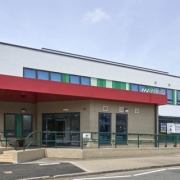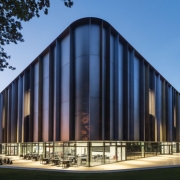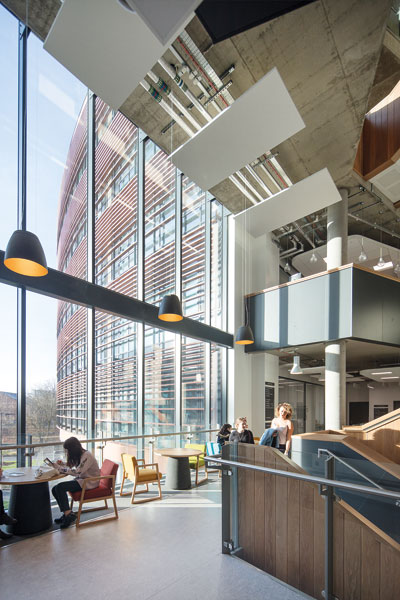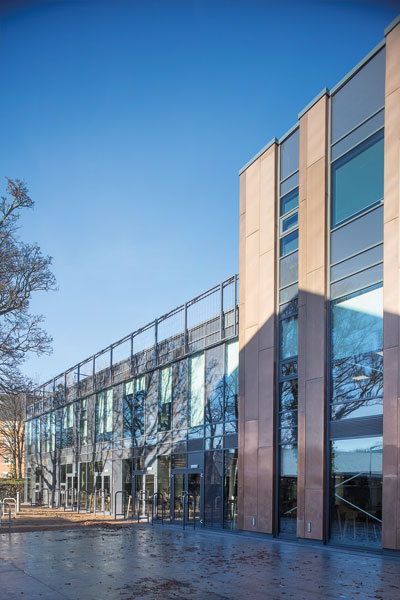Delivering outstanding educational outcomes for young people requires high quality teaching spaces. Whatever kind of nursery, school, college or university building you need, modular solutions for hire can be easily and quickly integrated into your existing estate. Here, Chris Coxon, from Algeco, looks at why, with ongoing pressure on capital budgets, more schools are choosing modular classrooms.
‘The secondary school population is forecast to increase by an extra 207,000 pupils by 2026*. That means more classrooms are needed. At the same time, refurbishing old classrooms or reconfiguring schools creates a pressing need for temporary or decant classrooms.
By choosing to hire, schools benefit from a learning environment that’s there for as long as they need it, and without needing to dip into Capex budgets. When the school has finished with the classrooms, they are simply taken away. It really couldn’t be easier.
Greater flexibility
When choosing a modular classroom there are a number of factors to consider. Research shows that fundamentals such as lighting and ventilation are of utmost importance in a learning environment. The HEAD Project (Holistic Evidence and Design)** found that more daylight and fresh air, within an optimised teaching environment, can increase learning capacity by up to 8%. It’s one of the reasons why we incorporate design features such as larger windows in our temporary classrooms.
A whole range of configurations are available, offering light and airy classrooms, with modules stackable up to four storeys high. Flexible, highly effective teaching spaces can be created easily, to your exact requirements.
Minimal disruption
Our modular classrooms are prepared offsite, which means pupils and teachers face minimal disruption to the day-to-day running of the school. Expect fewer delivery vehicles, fewer vehicle movements and a quicker, quieter, safer installation process, compared to traditional construction methods. It’s also worth bearing in mind that our permanent and temporary classrooms are fully compliant with building regulations and DfE specifications. That includes the latest acoustic and thermal performance requirements. As you would expect, our temporary, modular classrooms offer full WiFi, 4G broadband and data packages. These are part of our Plug’n’Play solution, meaning your classroom can be online within minutes.
Suitable for all ages, our education solutions include portable nursery buildings and crèches for pre-school age groups. Our portable nursery buildings are configured to meet the spatial needs of the seven areas of learning and development for young children, so there’s no need to compromise on facilities, even if it’s temporary.
Our 360 service provides you with a building fitted with fire safety equipment, such as a smoke detector, fire alarm, fire extinguishers, emergency lighting, emergency exit signage, access control and much more.
We can equip modular buildings with a range of safety features for students including finger guards for doors, heaters with a low surface temperature, CCTV, controlled access, taps with blending valves and more.
We offer modular classrooms, lecture theatres for students, laboratories, sports halls, music rooms, toilets and WC facilities, changing rooms, teacher and staff welfare units and storage facilities.
Built-in sustainability Once you’re finished with your temporary classroom, we’ll remove it for you, refurbish it and use it again. In fact, our modular classroom units can be reused, on average, up to 20 times or more during their lifecycle, which is an efficient use of materials – much better for the environment than building anew each time.
Our classrooms are also up to 96% recyclable, and benefit from a number of features, such as LED lighting and climate control systems, to help reduce energy consumption and maximise comfort all-year round. Plus, our new range of Smart technology solutions can help your school to save up to 30% on its modular classroom energy consumption, by actively managing the building to reduce running costs.

Decant solution for Mayfield Primary School
Operating as a 315-place primary school with a 26-place nursery, the classrooms at Mayfield Primary School were in a poor state of repair, and inefficiently configured. The existing school buildings were located towards the centre of the site which limited the capacity for external play and team sports.
The strategic vision for the new school was to increase the pupil intake to 420, as a 2-form entry with 30 nursery places. The project, which was managed by Algeco, involved relocating the reception classroom modular building, decanting pupils into temporary accommodation, and constructing a new, three-storey, 2,214m2 building, complete with drainage, new service connections and hard and soft landscaping. Manufacturing the modular buildings offsite minimised disruption at the school, while our high-quality temporary classrooms enabled teaching to continue throughout the build process. The way forward Whether you’re making space for additional pupils, or need a decant solution while you carry out much-needed refurbishments, or build a new school, we have the right solution for you.
Our temporary classrooms create high-quality, comfortable and inspiring learning environments that enable students of all ages to thrive. With our flexible hire contract terms, you can even spread the cost and avoid the need for capital expenditure. One phone call is all that’s needed to hire a modular building that’s ready for your staff and students.
CLICK HERE FOR THE ALGEGO WEBSTE







